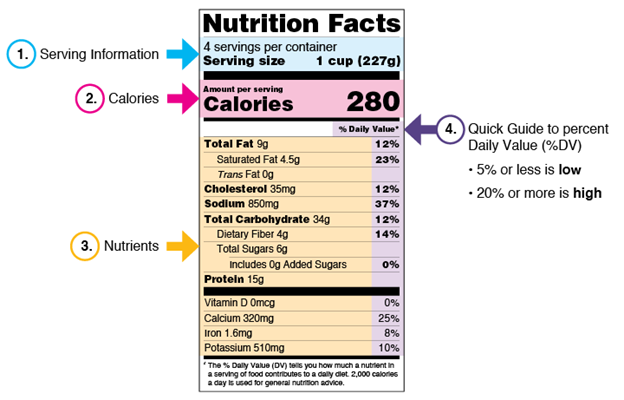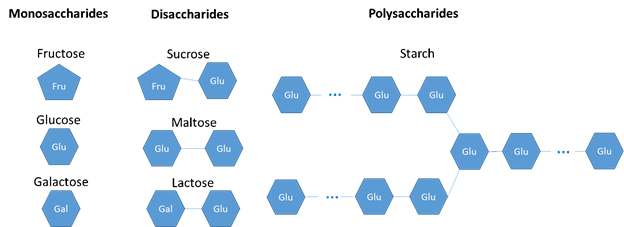By
BRAD DIETER
Low carbohydrate diets have become a very popular tool for weight loss over the last several decades. While much of the scientific rationale behind why they are utilized for weight loss, such as the carbohydrate-insulin hypothesis, has largely been proven wrong by the scientific literature, low-carb diets are still utilized quite extensively for weight loss.
They are most likely utilised because low-carb diets do show some efficacy for weight loss, especially in the short term. However, there is still a lot of confusion and myths out there around how to accurately set carbohydrate targets, how exactly low-carb diets may or may not work, and what things you should consider when adopting a low-carb diet yourself, or making recommendations to clients.
This information is especially important for Weight Loss Specialists and Nutrition Coaches to consider.
DAILY CARB RECOMMENDATION FOR WEIGHT LOSS
The daily recommendations for carb intake are based on two primary criteria: total daily calorie intake and the intensity/volume of physical activity. Higher total daily calorie needs come with higher recommendations for total daily carb intake, while lower total daily calorie needs come with lower recommendations. Furthermore, as the body relies heavily on carbohydrate intake for moderate to higher intensity physical activity, carb recommendations will increase as the total volume and intensity of activity increase.
Total daily calorie intake can be estimated using one of the estimating equations for total daily energy expenditure. The most common ones are the Harris and Benedict equation and the Mifflin-St Jeor. However, there are also online tools that can be used. Such as the NASM Online Calorie Calculator. This can help individuals determine how many calories they should consume daily.
After that, the number of grams per unit of body weight can be estimated based on current guidelines from the American College of Sports Medicine and the Academy of Nutrition and Dietetics. These recommendations are generalized as follows:
● Light Activity: 3-5 g/kg/day
● Moderate Activity (1 hour of moderate exercise): 5-7 g/kg/day
● High Activity (1-3 hours of intense, endurance exercise): 6-10 g/kg/day
● Very High (4-5 hours of intense, endurance exercise): 8-12 g/kg/day
HOW TO READ FOOD LABELS FOR CARBS
Food labels have been recently updated, giving a clearer insight into the true nutrition content of a given food, especially the carbohydrates of a food. The carbohydrate facts on a food label include total carbohydrates, dietary fibre, total sugars, and added sugars.
The way food labels work is that total carbohydrates represent the total carbohydrate count of the food. Each of the subcategories adds up to the total amount. For example, in the label below provided by the FDA, the total carbohydrate amount is 34 grams. However, of those 34 grams, 4 of them come from fiber, and 6 come from sugar (monosaccharides and disaccharides). Added sugars represent additional sugar that is added to the food during processing.
This means that there are roughly 24 grams of carbohydrates (34 g total – 4 g fiber – 6 g added sugar =24 g) that are complex carbohydrates (polysaccharides).

CALCULATING NET CARBS FOR WEIGHT LOSS
Although many nutrition labels count all carbohydrates toward calorie intake, the truth is not all carbohydrates provide a meaningful number of calories as the human body does not digest and extract energy from all forms of carbohydrates. This is the idea behind the concept of net carbs.
In most situations, dietary fibre is considered a non-digestible carb and does not contribute to the total carbohydrate intake. As such, in many cases, fiber is subtracted from total carb intake. In the figure above, the 4 grams of fiber is often subtracted from the total carbs (34 grams) to yield a total of 30 grams of usable carbs.
WHAT ARE DIFFERENT TYPES OF CARBS?
Carbohydrates can be classified into many different categories. The primary categorizations that are used are based on the following: simple vs complex and processed vs unprocessed.
Simple and complex carbohydrates are defined based on what types of carbohydrates are found within the food. Carbohydrates can be described based on their molecular structure, which just means how many single sugar molecules are combined.
Monosaccharides are single sugar unit carbohydrates. Disaccharides are two single sugar unit carbohydrates bonded together. Polysaccharides are long chains (usually 12 or more) bonded together.

Processed carbohydrates are generally foods that have been processed using industrial means to create foods out of the basic carbohydrates. For example, bread is a processed carbohydrate wherein wheat is processed to make flour and then make bread.
Unprocessed carbohydrates are generally foods that are consumed close to their natural state, albeit some cooking is often required. For example, potatoes are an unprocessed carbohydrate when they are simply baked or boiled and eaten. Fruits and veggies are also considered unprocessed carbohydrates.
WHAT TYPES OF FOODS CAN YOU EAT ON A 100-CARB-A-DAY DIET?
There are no foods that you are unable to eat, regardless of the exact amount of carbohydrates you need to consume in each day for your specific goals. If you need to eat 50 grams a day or 500 grams a day, you can consume all types of carbohydrates. It ultimately comes down to the amount of a given food you consume.
It is often helpful for people following a low-carbohydrate diet to be aware of and mindful of the carbohydrate density of different foods. Some carbohydrate sources have way more carbohydrates per gram of food than others. As such, some food choices make it more difficult to stay under a lower carbohydrate cap than others.
There is a spectrum of carbohydrate density, and some foods fall on the very high end, some in the middle and some on the low end. For example, foods like rice cakes, bagels, and white bread tend to be on the high end of the carbohydrate density spectrum. Foods like multigrain bread, oatmeal, and white rice are in the middle of the spectrum. Root vegetables such as parsnips and potatoes, as well as fruits like apples, oranges, and watermelon, are on the lower end of the carbohydrate density spectrum.
IS A LOW-CARB DIET NECESSARY FOR WEIGHT LOSS?
Low-carb diets are not necessary for weight loss, nor are they alone sufficient for weight loss. Carbs don’t necessarily control body fat after all. Over the last several decades there have been dozens of scientific studies comparing low-carb diets to other diets to examine their efficacy. These studies have ranged from experimental studies in animals making very precise biochemical measurements to highly controlled metabolic ward studies to free-living, real-world studies.
The primary findings from these studies have been:
1. Low-carb diets are not necessary for weight loss. Virtually all types of diets can and do result in weight loss when there is a negative energy balance (i.e. an energy deficit).
2. From a body fat mass perspective, low-carb diets may result in inferior fat mass reductions in shorter-term diets.
3. Adherence to low-carb diets is no better or worse compared to most other forms of dieting.
4. Low-carb diets often result in more immediate water weight loss and glycogen depletion than moderate-carb diets.
KETO CONSIDERATIONS
Very low-carb diets can often result in a state called ketosis. This occurs when dietary carbohydrates are low enough, or fat is high enough, such that the body begins producing ketones at a level that allows them to accumulate.
It is often touted that being in a state of ketosis increases fat loss, but there is no good evidence to suggest that is true. In fact, one recent study showed that fat loss is similar, if not inferior, in a state of ketosis. If choosing to adopt a low-carb diet, ketosis may be a result of that process, but should not be the primary focus.
Furthermore, there is some evidence that if someone is an athlete engaging in higher intensity, higher volume exercise, ketogenic diets should be avoided as they can impair performance.
HOW MANY CARBS A DAY IS TOO LOW?
For otherwise healthy individuals with no underlying medical conditions, there does not appear to be a truly minimal amount of carbohydrates that need to be consumed daily. However, very low carbohydrate diets can come with unwanted and potentially dangerous side effects when followed for extended periods. For example, cardiac dysfunction, impairment of physical activity, hair loss, nausea, digestive issues, and lipid abnormalities are all common side effects.
It is often recommended that more moderate carbohydrate intakes (1-3 g/kg/day) are consumed even in the context of weight loss.
THE AUTHOR
BRAD DIETER
Brad is a trained Exercise Physiologist, Molecular Biologist, and Biostatistician. He received his B.A. from Washington State University and a Masters of Science in Biomechanics at the University of Idaho, and completed his PhD at the University of Idaho. He completed his post-doctoral fellowship in translational science at Providence Medical Research Center, Providence Sacred Heart Medical Center and Children’s Hospital where he studied how metabolism and inflammation regulate molecular mechanisms disease and was involved in discovering novel therapeutics for diabetic complications. Currently, Dr. Dieter is the Chief Scientific Advisor at Outplay Inc and Harness Biotechnologies and is active in health technology and biotechnology. In addition, he is passionate about scientific outreach and educating the public through his role on Scientific Advisory Boards and regular writing on health, nutrition, and supplementation.

